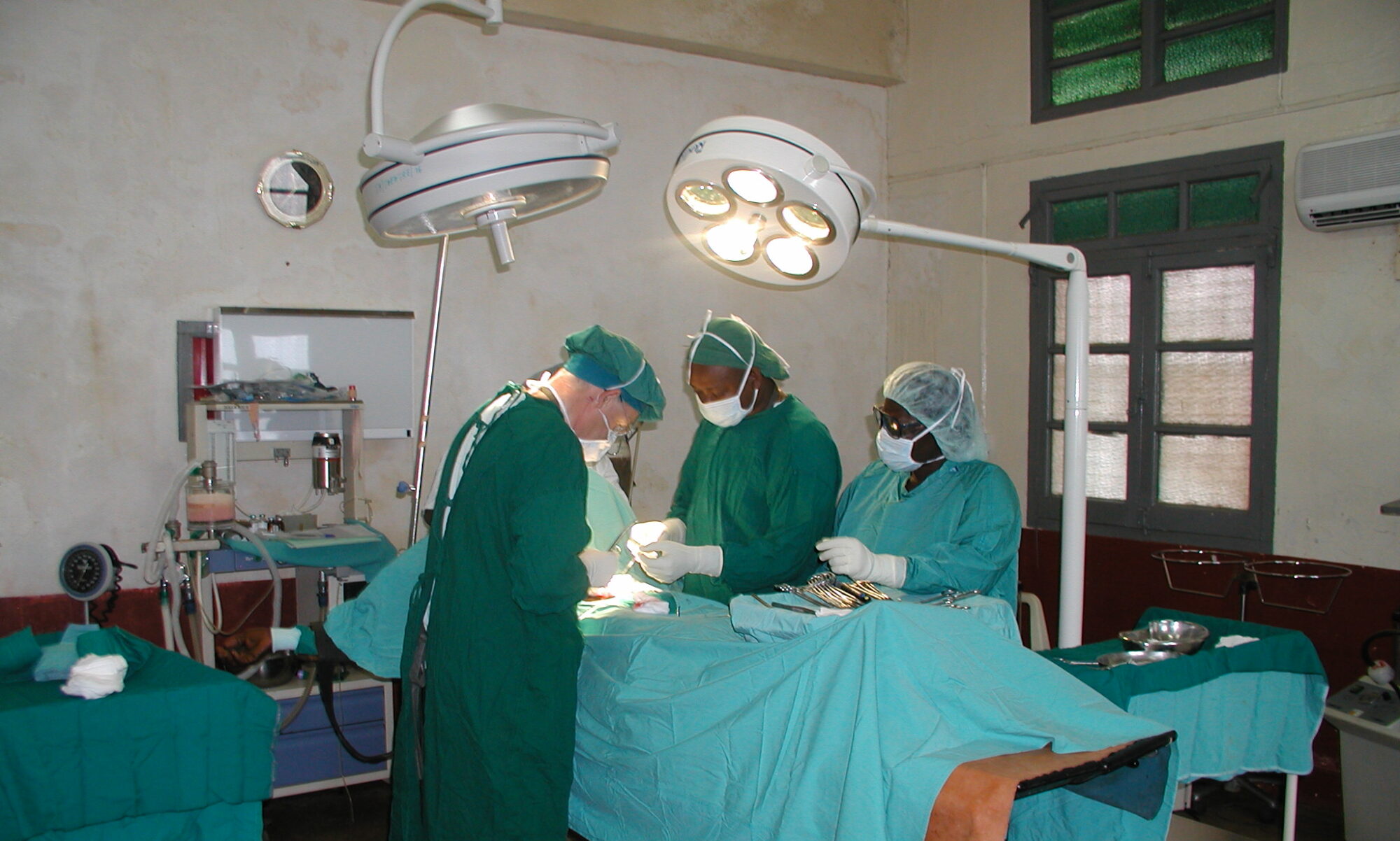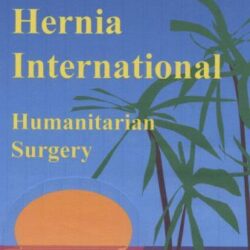Campaign for Hernia Surgery, Ventanilla 2017

On July 29 2017 we eight volunteers started from Madrid, Brisbane, Cardiff and Mexico for Lima to carry out a Humanitarian Surgical Hernia Mission in the Ventanilla Hospital. This Campaign was undertaken by the Foundations “Cirujanos en Acción”, and Hernia International.

The Mission took place from July 31st to August 10th in the Hospital General of Ventanilla district. It is a Level II Hospital inaugurated in 2007 which has 100 beds and 5 operation theaters. It has 14 surgeons, 6 anaesthetists and 17 professional nurses. The Surgery Department carries out conventional surgery, abdominal wall laparoscopic surgery, biliar surgery and rectal surgery among others.
The Ventanilla District belongs to the El Callao Province and it is a densely populated community with about 375000 inhabitants, situated at two hours from Lima. The Ventanilla population is mainly poor, and part of the people live in settlements in the nearby hills with any number of huts and heavy environmental pollution owing perhaps to an excessive growing rhythm that has exceeded the capacity of the local resources. The “Ventanilla” name (small window) comes from innumerable caves and passages that looked like small windows from the sea and which pirates used to hide in them the treasures stolen from the forts and ships they attacked.

Voluntaries for the Ventanilla Mission 2017:
The Mission was made up by eight volunteers, four consulting surgeons, one consulting anaesthetist, one resident, one nurse and one in charge of Logistics, Communication and Documents.
Dr. Manuel Cires – General Surgeon – Navarra, Spain
Dr. Rafael Chaves – General Surgeon – Cardiff, England
Dr. Hugo Mc Gregor – General Surgeon – Brisbane, Australia
Lady Dr. Estefanía Villalobos – General Surgeon – Mexico City, Mexico
Lady Dr. María Remón Izquieta – Anaesthetist – Navarra, Spain
Lady Dr. Justine Etuláin – Resident 4, Anaesthetics – Madrid, Spain.
D.U.E. Lola García – Nurse – Madrid, Spain
María Orbe – Logistics, Communication and Documents – Navarra, Spain
The team was directed and coordinated by Dr Manuel Cires, with the co;;aboration of Dr Luis Bernaola, Chief of the surgery service of the Ventanilla Hospital.was directed and coordinated by Dr Manuel Cires, with the collaboration of Dr Luis Bernaola, chief of the surgery service of the Ventanilla Hospital.
We also had the valuable collaboration of all the enthusiastic staff at the hospital, including anaesthetists, general surgeons, nurses, helpers, cleaners, cooks, administrators and others.
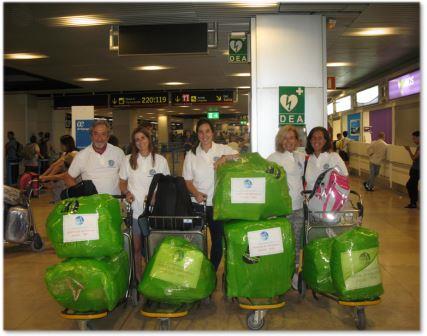
Operating Theatres
The Hospital has five operation theaters in a single surgical area. Four of these were put at the disposal of the Campaign, leaving the other for urgencies in General Surgery and Obstetrics.
Of the four available operation theaters two are conventional and the other too are small, prefabricated and temporarily adjoined to the main building. They had the necessary resources for work, but the largest number of material, including surgical sutures, nets, electrical scalpels, antibiotics, analgesics, anaesthetic products among others were provided by the voluntaries themselves.
A system was established by which the majority of the patients were discharged in the afternoon and only a few with more complications were sent to the Short Stay Department.

The Patients
Patients were contacted before our arrival through announcements of our Campaign in the local media by surgeons there, as also through volunteers who visited poor areas in Ventanilla with our proposal for free interventions for all. Still, in some cases there was no discrimination made and people with greater resources were also treated.
The selected ones were previously evaluated by local surgeons and anaesthetists with a special study and reasoned consent, and they received due information on the whole procedure as well as instructions for their preparation including personal hygiene. As a result, all patients were properly prepared and at peace.
The way from our residence in the San Miguel area in Lima to the Hospital at about 40 km. distance took more than one hour on account of the heavy and irregular traffic of cars and lorries on the Panamerican road.
Our activity began at 7:45 hours with the introduction of the team of volunteers to the patients and their relatives in the hospital hall; then María Orbe, our expert in logistics and communication, gave them further information and answered their questions, thus informing the patients and their relatives and facilitating the team’s work.
The patients in the surgical area were first attended to by local doctors who collected the data for a proper control of the whole surgical activity; they were then questioned and reexamined by the surgeon and the anaesthesist in full detail.
The type of anaesthetic was in general local, although a good number of operations were performed under local anaesthetic and sedation, and a few under general anaesthetic.
In each operation theater the surgical team was made up by a Campaign surgeon assisted by resident doctor or surgeon, an anaesthetist, a nurse for the instruments, and a helping nurse.
We carried out the check list according to the OMS Manual for verification before and after each intervention, as this is the practice in the Ventanilla Hospital.

Results
Number of patients: 177
89 men and 88 women
Number of proceedings: 200
· Inguinal hernias: 79 – Umbilical: 85 – Epigastrical: 27 – Incisional: 8 – Others: 1
Distribution of inguinal hernias according to their classification as a help to fix the complexity of the operation.
– H1: (hernia inside the inguinal canal) n = 42
– H2: (hernia settled in the superficial ring) n = 27
– H3: (inguinoscrotal hernia) n = 10

Complications
7 cases:
1 Coming loose of suture in umbilical hernia when carrying out a new suture.
1 Slight inguinal pain of ingyuinal hernia treated with analgesics and antiinflamatories.
1 Seroma of incisional hernia treated with aspiration and ambulatory drainage.
2 Inguinal and inguinoscrotal hernia treated in a conservatory way.
2 Inguinal umbilical wound hernia and inguinal hernia treated with local cures and antibiotics.

Discussion of results
Of the 200 surgical procedures realized 7 complications were reported which did not need surgical intervention; the infection rate was 1%, a very low value, taking into account that the majority of the patients had not received any antibiotical profilaxis. The seroma was treated in ambulatory sessions with punction and drainage, and the hematoma was treated in a conservative way.
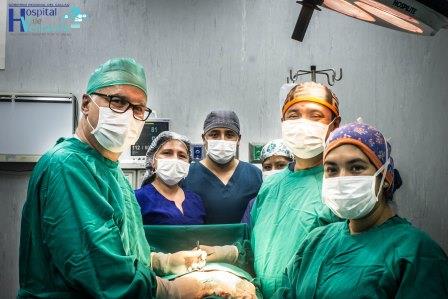
Observations
The personal at the hospital kept excellent asepsical measures during the whole campaign.
The nurses in charge of the instruments kept an excellent discipline and technique in the operation theatre.
– Washing of hands: with clorhexidina foam.
– Antiseptical preparation of the premises: they used clorhexidina soap to prepare the area.

Formation and Teaching:
An important teaching activity took place during the Campaign, so that the residents in surgery and anaesthesiology took an active part in diverse surgical and anaesthetical procedures under the supervision of voluntary surgeons and anaesthetists.
The last day of the Campaign we volunteers carried out an Academical Session with the following themes:
– Humanitarian Help: origin and actual state of the Hernia International and Surgeons in Action Foundations. Results of the 2917 Campaign in the Ventanilla Hospital, Dr. Manuel Cires.
– Surgery in the last century. Multidisciplinary handling of surgery in the last years. Dr. Rafael Chaves.
– Presurgery preparation in patients with giant ventral hernias: botulinica toxin, principles and technique; progressive and preoperative pneumoperitoneon. Dr. Estefanía Villalobos.
Surgical block. Standards and recommendations for the patient’s safety.

The Campaign ended on August 10th. Dr Wilber Espinoza, Director of the Hospital, addressed the voluntaries and gave thanks for the notable effort as well as for the high level of satisfaction of patients and relatives, and invited repetitions of new projects in the future. We were later given a diploma and were invited to a farewell supper in Lima.
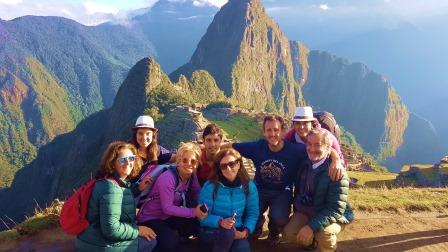
ConclusionThe campaign has meant a great effort for all of us. It began several months before our trip to Lima with the creation of the voluntary group, unknown persons from different countries and cultures, who
